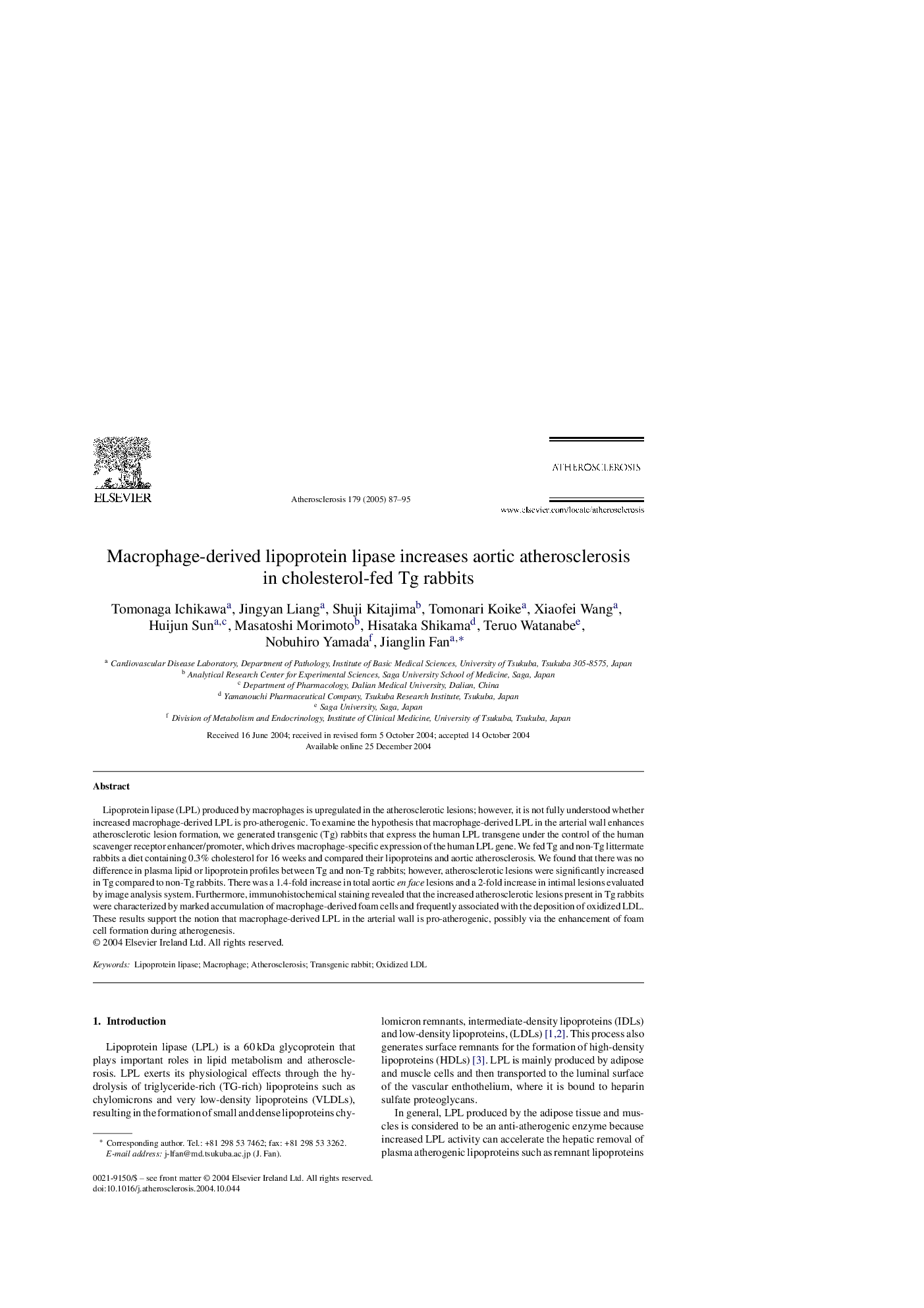| Article ID | Journal | Published Year | Pages | File Type |
|---|---|---|---|---|
| 9157780 | Atherosclerosis | 2005 | 9 Pages |
Abstract
Lipoprotein lipase (LPL) produced by macrophages is upregulated in the atherosclerotic lesions; however, it is not fully understood whether increased macrophage-derived LPL is pro-atherogenic. To examine the hypothesis that macrophage-derived LPL in the arterial wall enhances atherosclerotic lesion formation, we generated transgenic (Tg) rabbits that express the human LPL transgene under the control of the human scavenger receptor enhancer/promoter, which drives macrophage-specific expression of the human LPL gene. We fed Tg and non-Tg littermate rabbits a diet containing 0.3% cholesterol for 16 weeks and compared their lipoproteins and aortic atherosclerosis. We found that there was no difference in plasma lipid or lipoprotein profiles between Tg and non-Tg rabbits; however, atherosclerotic lesions were significantly increased in Tg compared to non-Tg rabbits. There was a 1.4-fold increase in total aortic en face lesions and a 2-fold increase in intimal lesions evaluated by image analysis system. Furthermore, immunohistochemical staining revealed that the increased atherosclerotic lesions present in Tg rabbits were characterized by marked accumulation of macrophage-derived foam cells and frequently associated with the deposition of oxidized LDL. These results support the notion that macrophage-derived LPL in the arterial wall is pro-atherogenic, possibly via the enhancement of foam cell formation during atherogenesis.
Related Topics
Health Sciences
Medicine and Dentistry
Cardiology and Cardiovascular Medicine
Authors
Tomonaga Ichikawa, Jingyan Liang, Shuji Kitajima, Tomonari Koike, Xiaofei Wang, Huijun Sun, Masatoshi Morimoto, Hisataka Shikama, Teruo Watanabe, Nobuhiro Yamada, Jianglin Fan,
